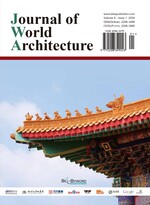Abstract
Building model data organization is often programmed to solve a specific problem, resulting in the inability to organize indoor and outdoor 3D scenes in an integrated manner. In this paper, existing building spatial data models are studied, and the characteristics of building information modeling standards (IFC), city geographic modeling language (CityGML), indoor modeling language (IndoorGML), and other models are compared and analyzed. CityGML and IndoorGML models face challenges in satisfying diverse application scenarios and requirements due to limitations in their expression capabilities. It is proposed to combine the semantic information of the model objects to effectively partition and organize the indoor and outdoor spatial 3D model data and to construct the indoor and outdoor data organization mechanism of “chunk-layer-subobject-entrances-area-detail object.” This method is verified by proposing a 3D data organization method for indoor and outdoor space and constructing a 3D visualization system based on it.
References
Lv H, Li P, Tang S, et al., 2016, Conversion Method from BIM Model to Multi-Level GIS Model. Geomatics World, 23(04): 64–70.
Deng T, Zhang K, Shen Z, 2021, A Systematic Review of a Digital Twin City: A New Pattern of Urban Governance Toward Smart Cities. Journal of Management Science and Engineering, 6(02): 125–134.
Gunduz M, Isikdag U, Basaraner M, 2016, A Review of Recent Research in Indoor Modelling Mapping. ISPRS - International Archives of the Photogrammetry, Remote Sensing and Spatial Information Sciences, XLI-B4: 289–294.
Joune KL, Yeong JL, 2013, Basic Concepts of Indoor Spatial Information Candidate Standard IndoorGML and its Applications. Journal of Korea Spatial Information Society, 21(3): 1–10.
Srivastava S, Maheshwari N, Rajan SK, 2018, Towards Generating Semantically-Rich Indoorgml Data from Architectural Plans. ISPRS - International Archives of the Photogrammetry, Remote Sensing and Spatial Information Sciences, XLII-4: 591–595.
Park S, Yu K, Kim J, 2020, Data Model for IndoorGML Extension to Support Indoor Navigation of People with Mobility Disabilities. ISPRS International Journal of Geo-Information, 9(2): 66.
Claridades ARC, Lee J, 2021, Defining a Model for Integrating Indoor and Outdoor Network Data to Support Seamless Navigation Applications. ISPRS International Journal of Geo-Information, 10(8): 565–565.
Zhao P, 2022, Research on Key Technologies of 3D Modeling and Semantic Segmentation of Indoor and Outdoor Scenes, dissertation, Wuhan University.
Shi Y, Liu K, Li X, et al., 2022, A Conceptual Model and Generation Method of 3D LOD of Building with Indoor Space Structure. Geomatics and Information Science of Wuhan University, 47(04): 561–569 + 596.
